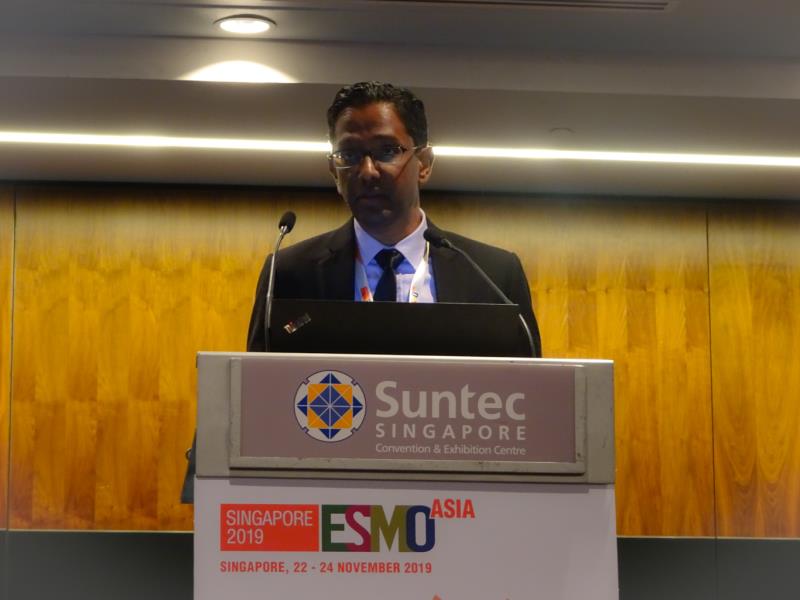 Dr Ravindran Kanesvaran
Dr Ravindran KanesvaranPatients with advanced or metastatic renal cell carcinoma (RCC) who have not previously received treatment with vascular endothelial growth factor-tyrosine kinase inhibitors (VEGF-TKIs) may potentially benefit from treatment with the TKI pazopanib, according to interim analysis results of the PARACHUTE* trial presented at ESMO Asia 2019.
Study participants were 101 adults (median age 62 years, 72.3 percent male, 63.4 percent Asian) with advanced or metastatic RCC who were anti-VEGF treatment-naïve who received pazopanib (either 400, 600, or 800 mg QD) within 15 days of study entry. Participants mostly had clear cell carcinoma (81.2 percent). Lung was the most common site of metastasis (73.3 percent), followed by bone (33.7 percent) and liver (20.8 percent).
A majority of the patients initiated treatment with pazopanib at an 800 mg dose (n=58). Of these, 17 patients required dose reductions, primarily due to adverse events (AEs; 19.8 percent). Of the 18 and 25 patients who initiated pazopanib at doses of 400 and 600 mg QD, respectively, three patients in each group required dose reduction.
“A significant portion of [patients], nearly 43 percent of them, were on the 600 mg or 400 mg [dose] and those patients who started on lower doses were less likely to undergo dose reduction,” said Associate Professor Ravindran Kanesvaran from the National Cancer Centre Singapore who presented the findings.
The relative dose intensity (RDI) was 78.7 percent (range, 37.6–100). Forty-seven patients received an RDI of ≥85 percent.
Twenty-nine patients completed the observational period (median 12.16 months). Of the 72 patients who discontinued treatment during this time frame, 42 did so due to progressive disease, 20 due to death, and seven due to AEs. [ESMO Asia 2019, LBA9]
The estimated progression-free survival (PFS) was a median 4 months, with patients with favourable risk exhibiting a greater PFS (median 10.2 and 8.8 months when risk was assessed using MSKCC and IMDC**, respectively). Conversely, those with poor and intermediate risk had a shorter PFS (median 3.2 and 3.8 months [MSKCC] and 3.7 and 4.0 months [IMDC]).
One patient experienced a complete response, while 10 patients experienced partial response. Twenty-three and 22 patients experienced stable disease and progressive disease, respectively.
Overall, 74.3 percent of patients experienced at least one AE, though these were predominantly grade 1–2 AEs (53.5 and 45.5 percent, respectively), with two patients experiencing grade 5 AEs. The most common AEs were hypertension (14.9 percent), palmar-plantar erythrodysesthesia syndrome (11.9 percent), elevated alanine aminotransferase levels (8.9 percent), and decreased appetite (8.9 percent).
“The interim results of the PARACHUTE study support the use of pazopanib in patients with advanced or metastatic RCC who are naïve to VEGF-TKI therapy,” said Kanesvaran. However, the short follow-up and small patient population presents a limitation, he cautioned.
In the Q&A session, Kanesvaran noted that despite the short PFS, lack of access to and the high cost of other currently available agents and strategies in Asia may still drive patients towards choosing VEGF-TKIs in the first-line setting.
The short PFS could also have been due to the low exposure to pazopanib, with many patients not initiating on the full dose, as well as the more severe disease in some patients, he added.